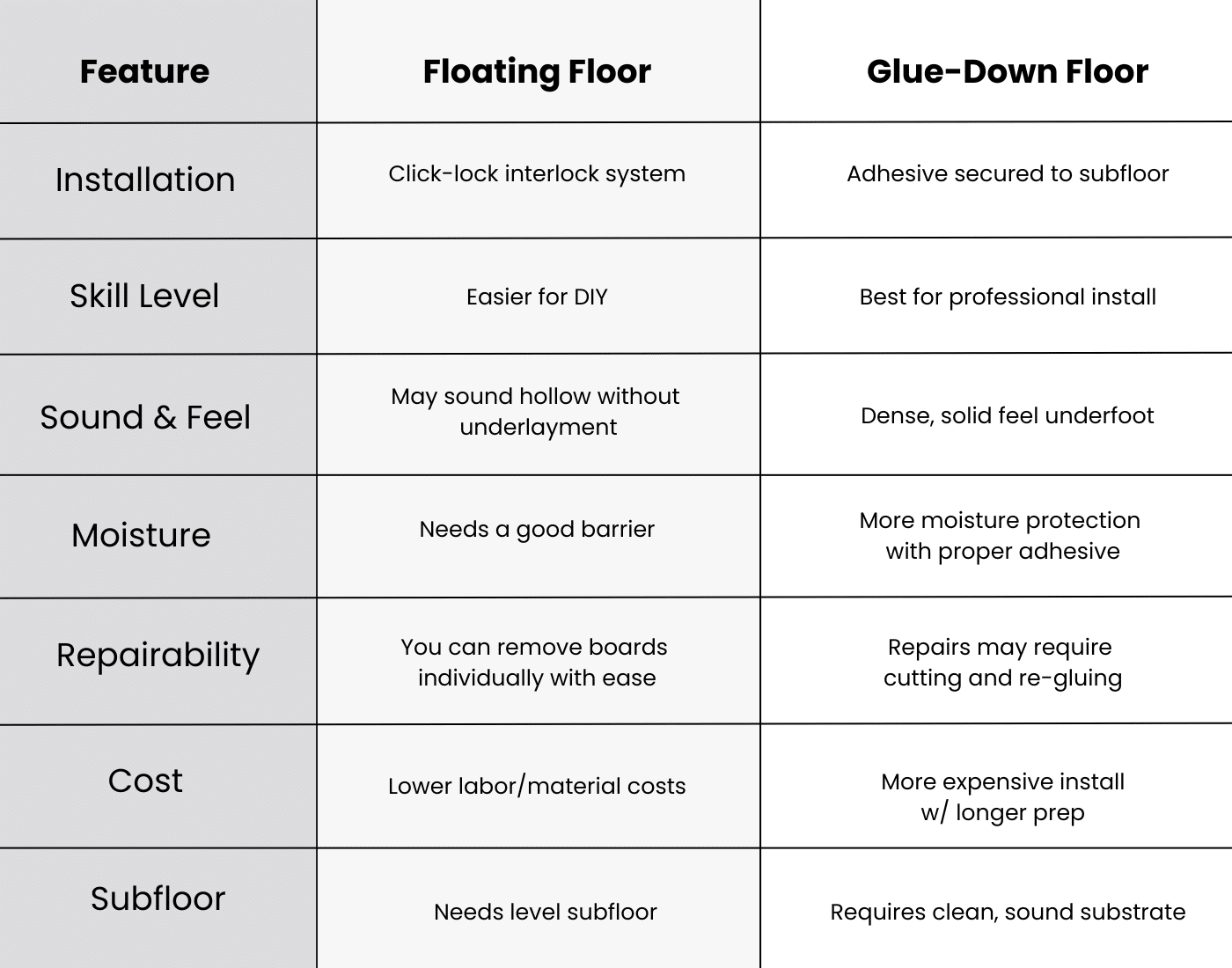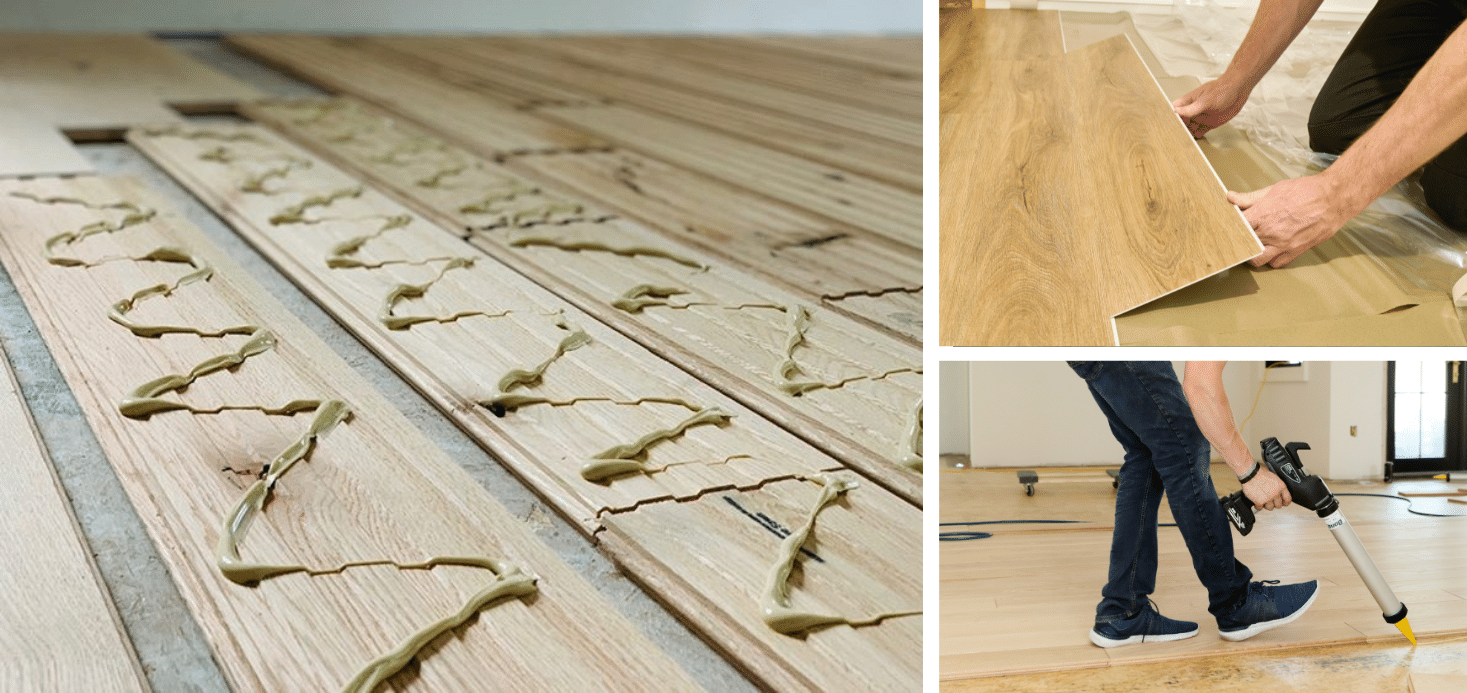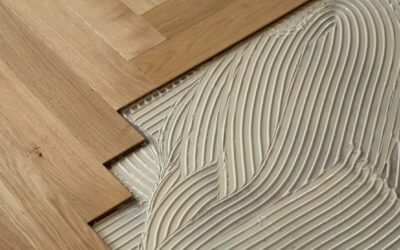Choosing between a floating floor or glue-down can make or break your flooring project.
The approach you take affects everything from cost and durability to comfort underfoot and long-term maintenance.
To help you make the right call, Christopher Brand, a seasoned floor installer who now helps contractors and homeowners behind the Pro Desk, provides you with professional tips.
With his insights, you will learn the key differences between floating and glue-down floors, so you can weigh your options, avoid mistakes, and choose the best installation type for your project.

What Is a Floating Floor?
A floating floor doesn’t attach to the subfloor with glue or nails. Instead, it uses a locking system (like click-lock or tongue-and-groove) that lets the planks interlock and float above the surface.
Chris recommends floating floors in specific scenarios, especially when manufacturers give the go-ahead.
He says they work well when planks run parallel to the floor joists. Floating installs also cut costs by eliminating the need for materials like Luan, glue, or fasteners.
DIYers often choose floating floors because they’re easier and less expensive to install. As Chris explains, “Maintenance and repairs can be as easy as removing and replacing damaged boards.” Just be sure to follow the manufacturer’s instructions.
Even so, floating floors come with trade-offs. Chris notes that floating floors “require more mindfulness from the end user—such as not rolling things that are too heavy or not watching for split seams.”
What Is a Glue-Down Floor?
Glue-down flooring uses adhesive to secure each plank directly to the subfloor. Though it takes more time, skill, and effort, many professionals consider it the gold standard for long-term durability, sound performance, and moisture protection.
Chris puts it simply: “Glue-down is always the best way to install a floor. It creates a sturdier surface with no hollow-sounding spots.”
That solid, dense feel underfoot makes it a top choice for high-traffic spaces. It also holds up better in moisture-prone areas.
Chris explains that glue-down floors offer superior moisture protection: “they’re better than floating floors installed over moisture barriers like Whisper Step or paper.”
Read the buyer’s guide to glue-down vinyl and glue-down vs. nail-down hardwood flooring.
Key Differences Between Floating & Glue-Down Floors
Take a look at this chart comparing the key differences between glue-down and floating floors.

Pros & Cons of Floating Floors
Pros:
- Easier and less expensive to install
- Works with engineered and vinyl flooring (when approved by the manufacturer)
- Boards are easier to remove and replace
- Cuts down on materials like Luan and glue
Cons:
- May shift or click underfoot without proper underlayment
- Needs expansion space and often overlapping transitions
- Doesn’t handle heavy rolling loads well
- Less ideal for high-moisture or uneven subfloors
Pros & Cons of Glue-Down Floors
Pros:
- Provides a solid, stable feel with better sound absorption
- Offers long-term durability, especially in high-traffic areas
- Works well on concrete when properly prepped with the right adhesive and moisture barrier. Chris advises: “be sure to test for moisture and prep the slab carefully. You may need to patch or level low spots for best results.”
- Performs better in moisture-prone areas than a floating floor over underlayment
Cons:
- Installation requires more time, labor, and materials
- Harder to remove planks if you need to make a repair
- Requires a clean, well-prepped subfloor. Chris explains that gluing to Lauan or OSB can protect the concrete slab: “Gluing over the Lauan/OSB will prevent damage to a concrete subfloor, making removal simpler.”
Which Method Should You Choose?
The right installation method depends on your subfloor, space, skill level, and goals.
Here’s how Chris breaks it down:
Plywood or OSB subfloors: Both floating and glue-down methods work well.
Concrete slabs: Floating is easier for DIYers, but glue-down offers better long-term durability if the slab is properly prepped.
DIY or temporary installs: Floating is faster, cheaper, and more forgiving if mistakes happen.
Commercial settings or high-traffic homes: Glue-down delivers a more solid feel and longer lifespan.
Your flooring type also affects the decision. As Chris notes, prefinished engineered floors “can greatly reduce installation costs… and you have the option to utilize a floating floor.”
Compared to unfinished options, prefinished flooring reduces time and mess by eliminating the need for sanding and finishing. And many products are compatible with floating installation.
Whatever method you choose, remember that floating floors can be a great option in the right setting, especially for DIYers or when you have limited time or budget.
Glue-down floors offer a sturdier, longer-lasting result, particularly in commercial or high-traffic areas. No matter what you choose, make sure to think through the full install plan, from subfloor prep to finish.
Conclusion
Glue-down flooring is the most reliable, long-term installation method. It gives you the best performance in terms of stability, sound, and moisture protection.
But it takes more prep, skill, and effort to install and make repairs. If you’re working over concrete, make sure to properly prep the slab and use the right adhesive.
Floating floors have their place, especially for engineered and vinyl floors. You will save time, money, and find it easier to make repairs, so it’s perfect if you plan to install this yourself.
The trade-off is that floating floors demand more daily care. They’re more vulnerable to shifting, seam separation, and wear if not properly maintained.



